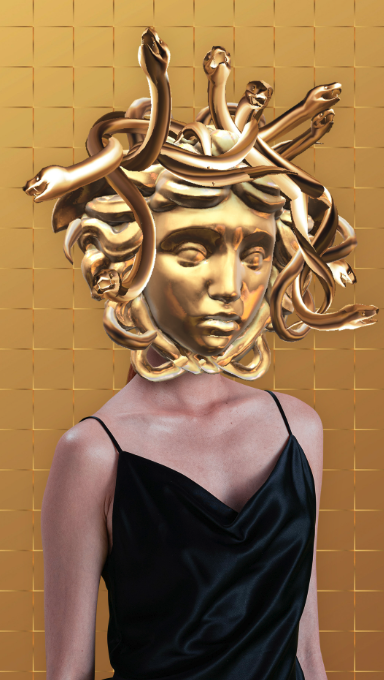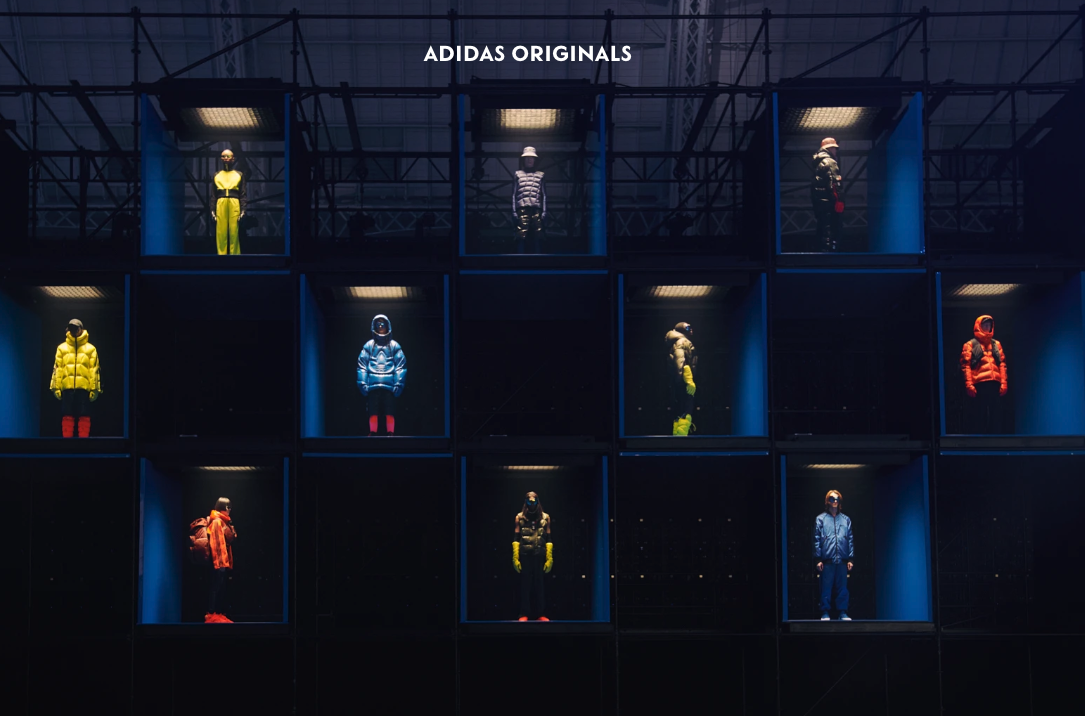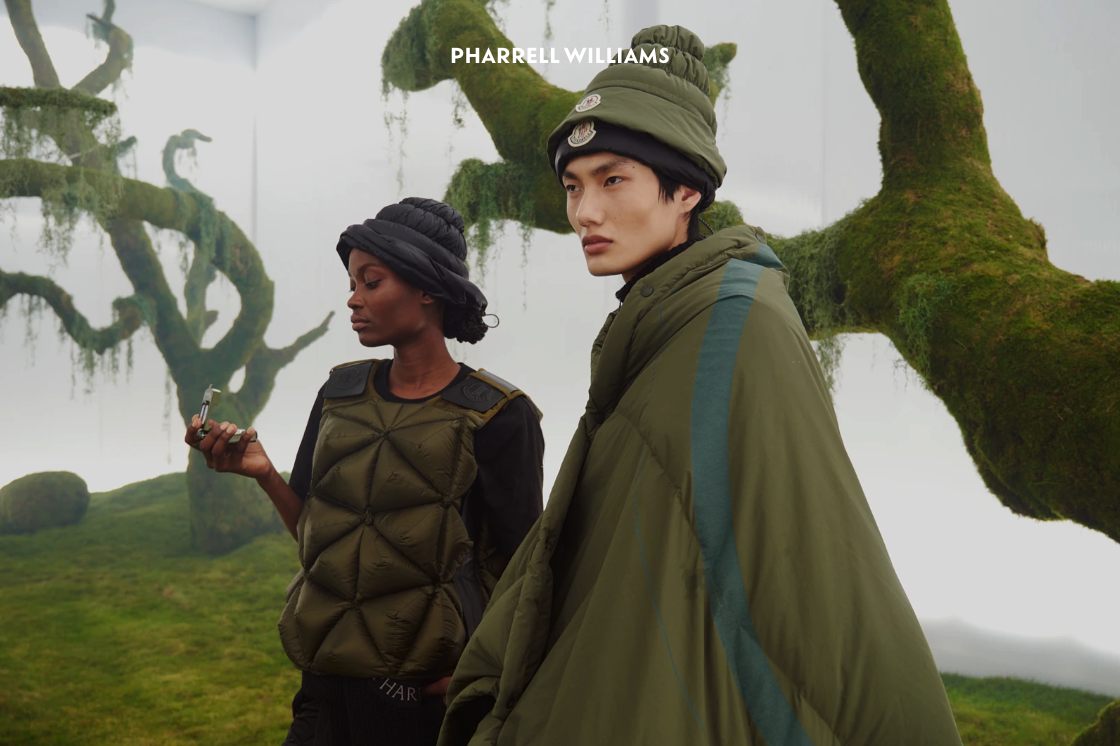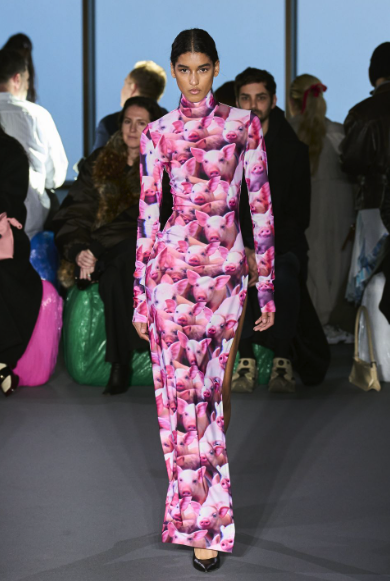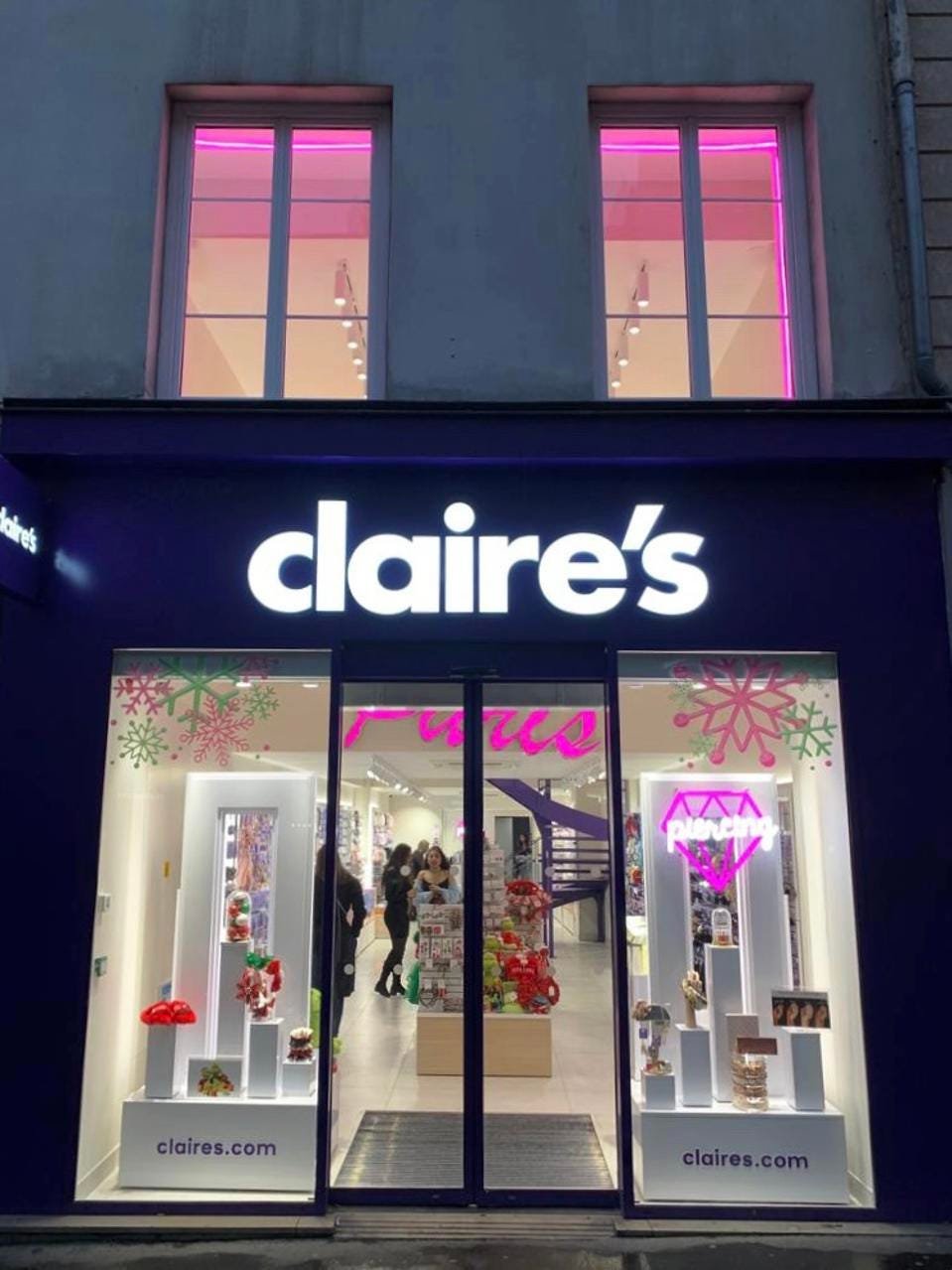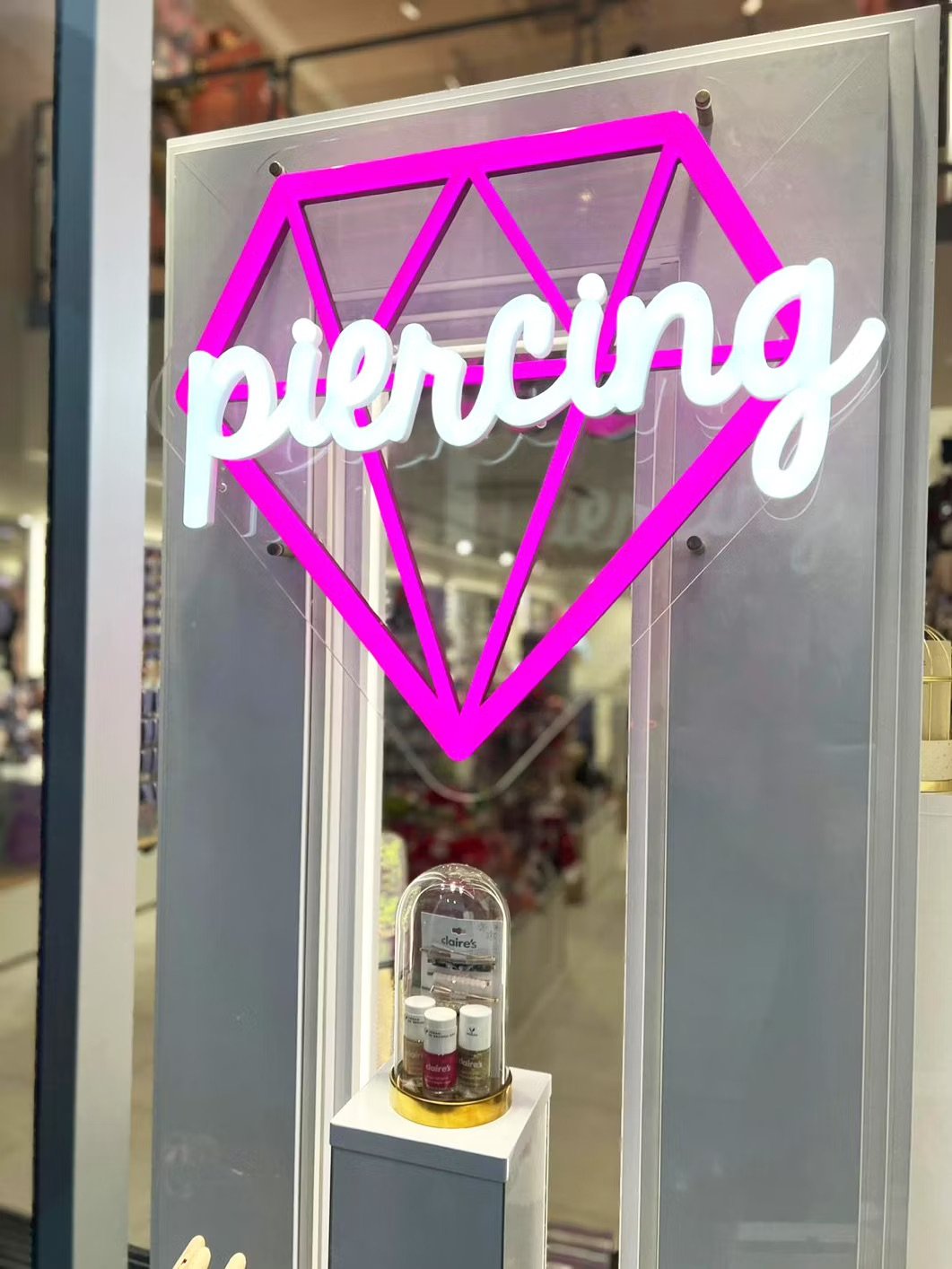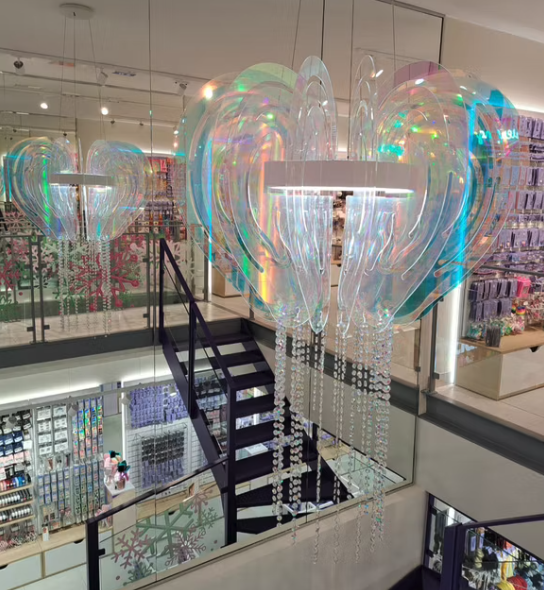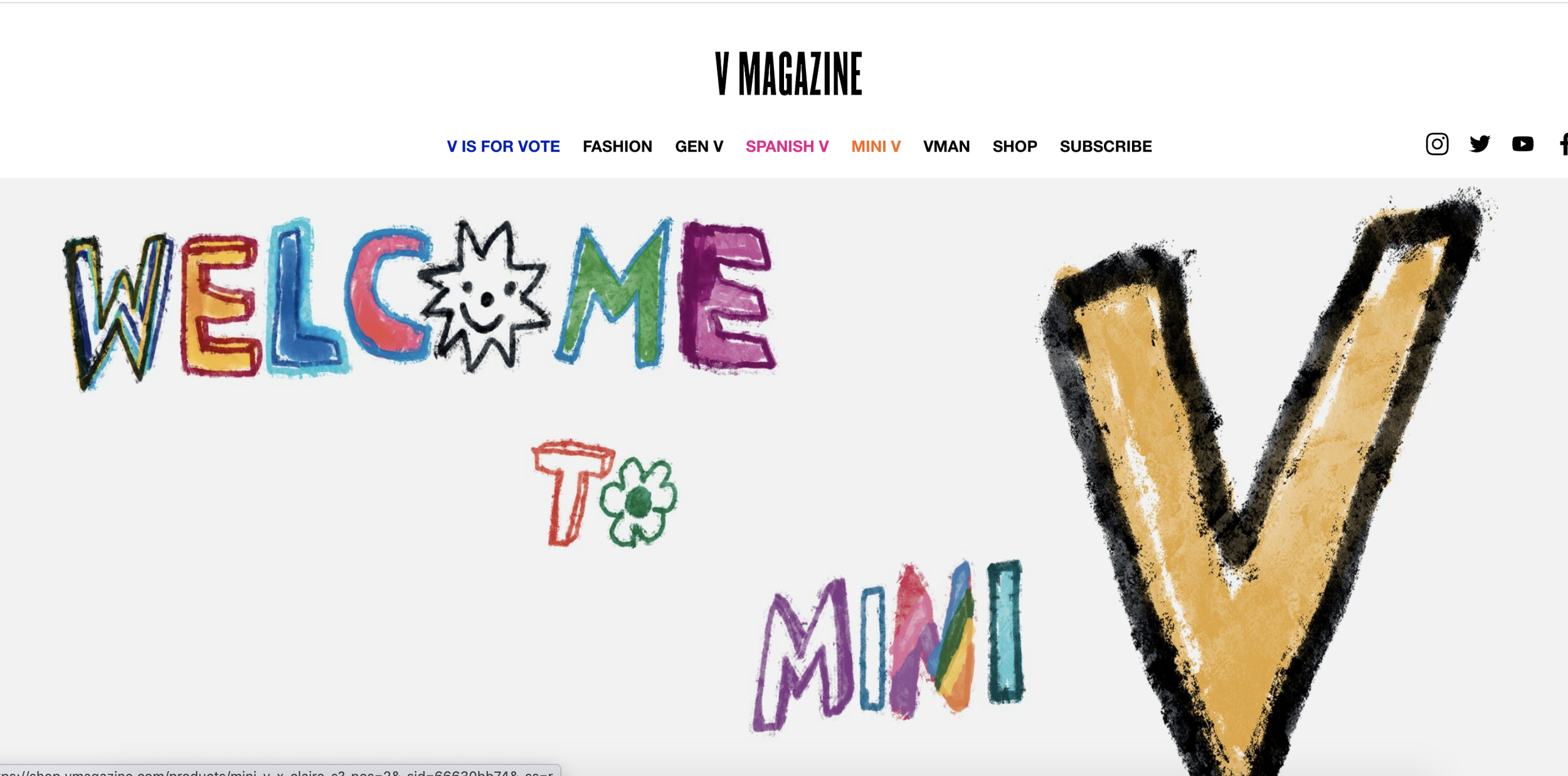Parallel lessons from the Fashion industry
Trends
Parallel lessons from the Fashion industry
Move over, metaverse! We look at what parallel lessons we can learn from the fashion industry on brand engagement and apply to the exhibition world – whether physical, digital or hybrid.
Brand engagement spin-offs, collabs & new stances
Here at Ignition, we like to stay at the forefront of the latest trends and developments. Our teams are always looking at new ways to inspire our clients. We looked to the fashion industry to see what parallel lessons we can learn and apply to our clients across the exhibition/events/experiences sector.
Hungry for viral buzz, the Autumn/Winter 2022/23 fashion weeks saw shows and spin-offs feeding off the ultra-shareable thrills of live, multi-sensory, ‘real-world’ moments.
Last season’s non-fungible tokens (NFTs) and synth beings were swapped for ‘hot topic tech’, including provocative sentient robots, generative artificial intelligence, ‘meta-modern brandiverses’ and augmented reality transformations.
We unpack some notable experiences and look how we can apply this to the live, virtual and hybrid events sector.
1. Vogue x Snap’s Fashion-Stretching Filters
Foregrounding the discourse surrounding Web3-era identity was Vogue x Snapchat: Redefining the Body – an interactive multi-room, augmented-reality centred (AR) exhibition during London Fashion Week (LFW), toying with the parameters of physical fashion.
It comprised six designer/brand rooms: Dior, Lagos-based Kenneth Ize, Britain’s Richard Quinn, Stella McCartney, South African Thebe Magugu, and Versace. On entering, guests scanned QR codes to unlock Snap’s Marker Tracking technology, which relates an AR experience to a specific physical object and/or space.
For Dior, the lens revealed halos of light encircling the garments, enabling fans to trial a signature trench coat against the backdrop of a Renaissance grotto. The Snap tech in Kenneth Ize’s room unfurled sound alongside virtual trialling to surface his West African story, while Richard Quinn delivered an ethereal virtual garden and the opportunity to conjure a wide brimmed balaclava on-body. Versace apparated virtual masks reminiscent of its signature Medusa snakes, whereas at Stella McCartney, it was a crown of fungi.
Meanwhile, Magugu’s lenses sparked a dress of oscillating patterns. Remote fans (Snapchatters) could use the Vogue x Snapchat Lens to select a designer and have the relevant filter added to their Snap carousel.
Vogue x Snap x Versace
Vogue x Snap, Dior
Vogue x Snap, Kenneth Ize
Vogue x Snap x Thebe Magugu
Vogue x Snap
Vogue x Snap x Versace
Vogue x Snap x Stella McCartney
Vogue x Snap x Stella McCartney
2. Moncler’s ‘More is More’ Cross-Industry Super Show of Immersive Theatrics
Cementing its reputation as luxury’s master of immersive spectacle, Moncler – which saw significant year-end sales growth in 2022 – affirmed its belief in collective creativity with its extravagant LFW mega-show, The Art of Genius, previewing its 2023 co-creators to a crowd of over 10,000.
The free (but ticketed) event, which expanded the collaborative Moncler Genius model launched in 2018, comprised bespoke spaces for each partnership (many incurring large queues). The Art of Exploration by Adidas Originals transported guests along a moving ‘runway’ flanked by glacier visuals and snowscape sonics. Mercedes’ low-gravity-themed The Art of Imagination took automotive into outer space via metallic-suited dancers suspended from the ceiling. And Pharrell Williams’ The Art of Terrain cultivated camping vibes via trees, moss, grass and the scent of smoke.
The Art of Love with Frgmt – a Moncler sub-brand by Japanese musician, producer and designer Hiroshi Fujiwara – afforded guests peepholes into a white circular room where models tended to semi-sentient baby robots (Lovots). And Art for All by Jay-Z’s record label, Roc Nation, offered a dimly lit recording studio to leave vocal signatures in. Meanwhile, The Art of Lightness – convening British music broadcaster and club promoter Boiler Room plus Italian skate brand Palm Angels –offered the technological timeout (a completely analogue experience) of a foam party.
Non-fungible tokens (NFTs) made an appearance too. Attendees received a pre-event email directive to download the Arianee Web3 wallet and scan a QR code to claim their free Proof of Attendance Protocol NFT ‘certificate’, granting early access to the Genius 2023 collections on launch later this year.
Moncler, The Art of Genius x Hiroshi Fujiwara
Moncler, The Art of Genius x Palm Angels
Moncler, The Art of Genius x Roc Nation
Moncler, The Art of Genius x Mercedes
Moncler, The Art of Genius x Adidas
Moncler, The Art of Genius x Adidas
Moncler, The Art of Genius x Pharrell Williams
Moncler, The Art of Genius x Pharrell Williams
3. Coperni Recaptures Rep with New Robo-Provocateurs
Seeking to extend its Internet-exploding, futurism-focused reputation from last season (when ‘The Chemist Tailor’ Manel Torres sprayed a dress onto American model Bella Hadid’s body mid-show), for A/W 22/23, French label Coperni partnered with US engineers Boston Dynamics on a Milan show featuring canine robot Spot.
Conceived as a positive reinterpretation of Jean de la Fontaine’s 17th century fable, The Wolf and the Lamb (whose overriding message is to always beware of one’s enemies), the show posited the idea of supportive, even tender, human-robot relations. After prowling alone, the dogs, which deploy “athletic intelligence” to traverse difficult terrain, began to interact with the models. One nuzzled a model’s face, and then tugged a jacket from her shoulders.
The robo-canines were pre-planned by a Parisian choreographer and their movements were orchestrated live.
Coperni
Coperni
Coperni
Coperni
4. Christopher Kane & Tommy Hilfiger Grab Generative AI
Scottish fashion designer Christopher Kane bolstered his irreverent luxury ethos for LFW with an 80s-inspired show incorporating generative artificial intelligence (AI) via some garments’ print designs.
Kane, who has not revealed which AI software was involved, used audio prompts to describe what he wanted, resulting in a series of hyperreal animal visuals (“swarms of chickens, piglets and rats”) on bodycon jersey dresses.
Elsewhere, Tommy Hilfiger announced a partnership with IBM and The Fashion Institute of Technology’s Infor Design and Tech Lab for pilot project Reimagine Retail, where AI will lead the design creation process by identifying trends ultrafast.
Consulting company McKinsey predicts that in the next three to five years, generative AI could add up to $275bn to the apparel, fashion and luxury sectors’ operating profits – “from co-designing to speeding up content development processes”. This includes “fully written scripts, 3D designs and realistic virtual models for video campaigns”.
Christopher Kane
Christopher Kane
Christopher Kane
5. Catwalking with KWK by Kay Kwok’s ChatGPT Soundscape
Another project playing on the creative possibilities of generative AI came via Shanghai-based fashion designer KWK by Kay Kwok and the conversation-oriented ChatGPT at LFW.
Based on a semi-dystopian storyline set in the year 2100, the show was supported by a soundscape from Russian composer and musician (and one-time Nike Woman ambassador) Daria Fisher. Here, ChatGPT was used as a conduit for translating written text relating to mood and emotion into musical melodies.
Explaining her process, Fisher said: “I talk to ChatGPT every day, discussing various topics with it. Although ChatGPT doesn't do full sound production, it can give you a melody, which I used to improvise with the violin and synthesiser [during the performance].”
Daria Fisher, Instagram
KWK by Kay Kwok
KWK by Kay Kwok
KWK by Kay Kwok
6. Jens Laugesen’s ‘Metamodern Brandiverses’
The closest thing to a metaverse this season came from Jens Laugesen’s Meta/Sens – a multipart project by the London-based Danish fashion designer and founder of “holistic luxury tech advisory collective” Konsensx to relaunch his eponymous brand.
In Laugesen’s London showroom, visitors scanned wall-pasted QR codes to unlock onscreen renderings of the collection – seen as an AR projection floating in space, instead of a body mapped item.
Laugesen’s accompanying virtual landscape was a “meditative” browser-based landscape of blue skies, mountainous backdrops and birdsong to explore 10 looks in 3D. Visitors could be guided or roam independently.
Laugesen called the project meta-modernist. The term was coined by Dutch theorists Timotheus Vermeulen and Robin van den Akker to describe the shift in contemporary culture away from the hallmarks of post modernism (like irony, pastiche and nihilism) to a “resurgence of sincerity, hope, romanticism […] and the potential for grand narratives”, without “forfeiting all that we’ve learnt from postmodernism”. They see this “manifest as a kind of informed naivety, a pragmatic idealism […] oscillating between sincerity and irony”.
Jens Laugesen
Jens Laugesen
Jens Laugesen
Jens Laugesen
Jens Laugesen
7. Emcee Studio’s Influencer E-Boutiques
New York Fashion Week (NYFW) also showcased a new brand-influencer bonding tool. Content creators turn shopkeepers by curating virtual showrooms – Emcee-optimised for sales conversions – picking from a menu of partner brands’ products.
Influencers select products from businesses using the Emcee dashboard, create content, and then share their showroom URL on social media, connecting directly with fans. Companies decide what percentage of each purchase influencers keep, but it can be as much as 25%.
Emcee Studios combines a cost-efficient affiliate model while ticking the box of an aesthetically pleasing, curated and thus intimate influencer-to-consumer experience. People often want to feel they’re buying from their favourite person (influencer) over their favourite brand. It’s ideal for reducing the chance of a bad return on investment, considering it can cost between £5,000 - £50,000 for a single promotional video.
Emcee Studios
Emcee Studios
8. Private Policy x Zero10’s Instant AR Style Trialling
Following its September 2022 partnership on a physical pop-up for trialling digital garments, Zero10 has innovated its way into NYFW again.
This time, the pioneering Cypriot-American AR fashion platform, which fuses 3D body tracking, AR and cloth simulation tech to create digital garments fans can wear as overlays onscreen, it’s partnered with US genderless label Private Policy.
Three items from Private Policy’s ‘We Are All Animals’ collection were replicated as virtual garments to try in-app immediately post-runway. Eagle-eyed New York locals got early access to the activation – a unique QR code on posters in Tribeca and SoHo linked directly to the AR items.
Meanwhile, US luxury label Coach is rumoured to be integrating Zero10’s Custom Shop tech – which lets fans play with existing designs – into its digital commerce ecosystem.
Zero10
Private Policy x Zero10
Private Policy x Zero10
9. Claire’s Haute-Low Flagship Furthers Reinvention
Adjacent to the A/W 22/23 shows, but created in collaboration with one of high fashion (and music’s) most celebrated stylists, Nicola Formichetti, US tween/teen-targeting accessories brand Claire’s unveiled a Parisian concept store during Paris Fashion Week. This continued the reinvention that’s seen it exchange waning mall locations for new spaces, host TV-show referencing trend tutorials (namely its partnership with Euphoria), and enter the (Shimmerville) metaverse.
Formichetti, Claire’s new creative director, spearheaded the design of the permanent 1,200 sq ft store. It features a giant ear-shaped chandelier, exclusive products including handbags and make-up items (the venue will be a testbed for new launches), and Mini V (the teen version of V Magazine), with which Formichetti and now Claire’s is affiliated. It’s also the first to host experiential installations — currently a social media content creation studio. Despite the location, price points won’t change, indicative of the duo’s advocacy of anti-elitist creative expression.
Claire’s
Claire’s
Claire’s
Claire’s
Mini V
Mini V
Key learnings
Make Exhibits a Pop Cultural Fulcrum
Young people value physical brand spaces more than ever, particularly those with a distinct proximity to music, art, design, and do-it-yourself creativity. From Roc Nation’s recording studio to Claire’s Paris location featuring a content studio and Mini V affiliation, the message is clear: build pop culture into physical exhibits.
Get Ready for Generative AI
As evidenced in presentations from Christopher Kane and Kay Kwok, the nascent relationship between generative AI and brand engagement holds considerable promise, from first draft scriptwriting to mood-inspired soundtrack melodies. For now, treat tools like ChatGPT and Dall-E (for text and image generation, respectively) as a springboard – never the replacement – for original creative expression.
Prepare for Robot-Assisted Brand Engagement
Robots hold promise too, considering the rising instances of consumers feeling comfortable connecting with them, as seen in Moncler and Hiroshi Fujiwara’s semi-sentient baby Lovots, and Coperni and Boston Dynamic’s robo-dogs. But note the current value of only partial humanisation: ‘honest’ approaches echo how the patent artifice of avatars has endeared them to people tired of disingenuous human influencers.
Mixed Reality Still Makes Magic
Bake a digital layer into your exhibition reality. With the digital market rising fast, offering digital replicas/accompaniments to physical products is arguably becoming less of an opportunity and more of an imperative. Look at translating physical items into digital desirables (no metaverse required).

